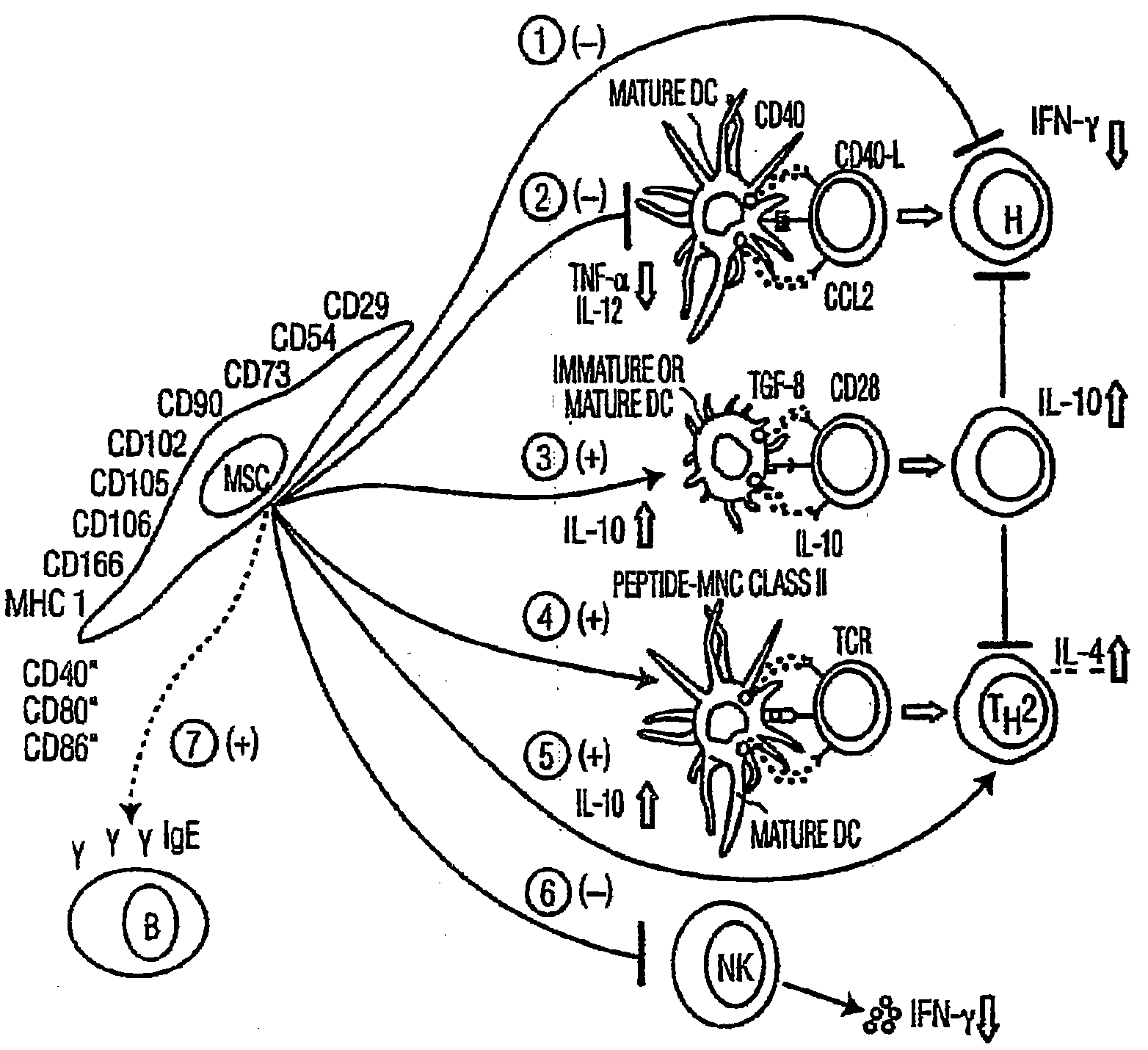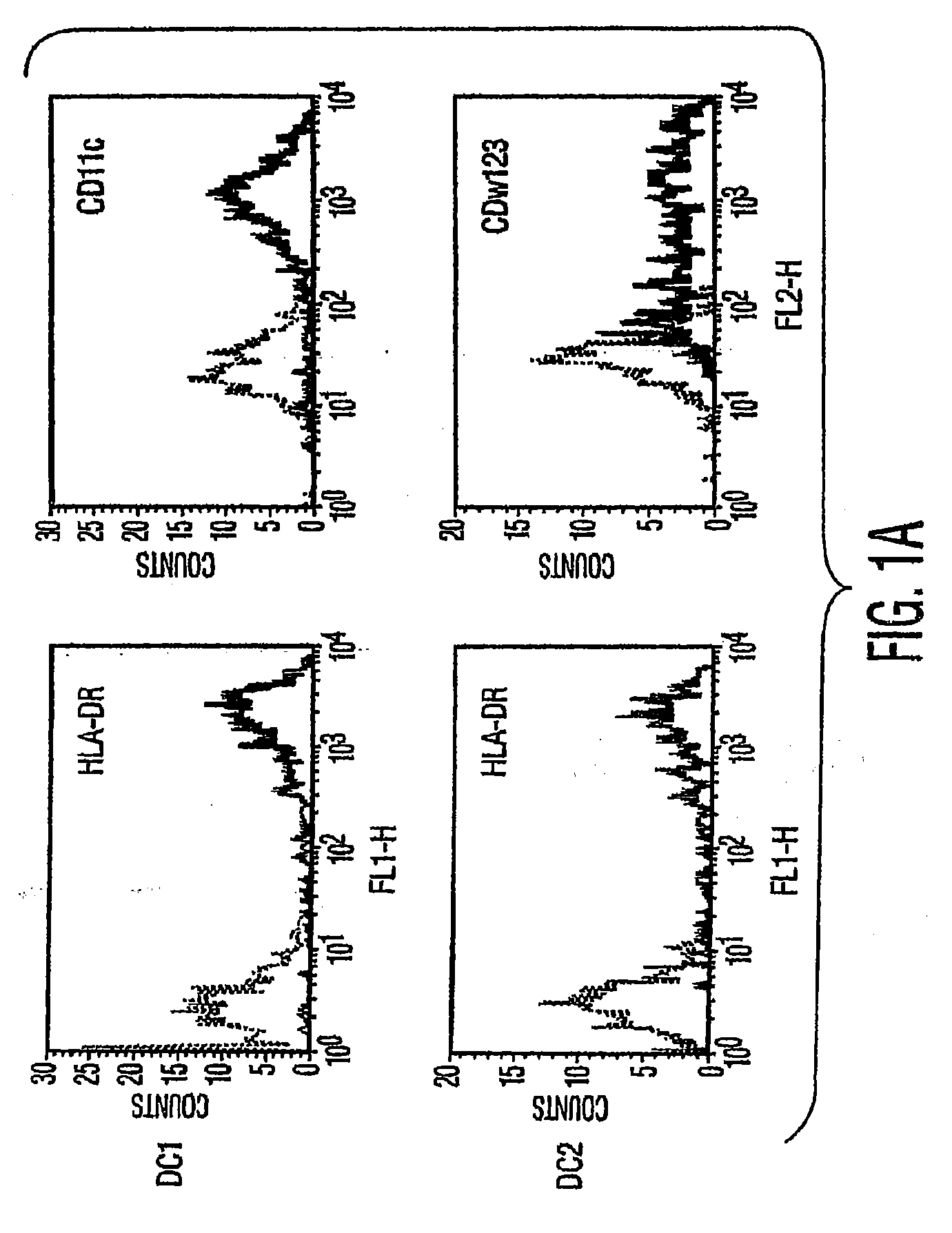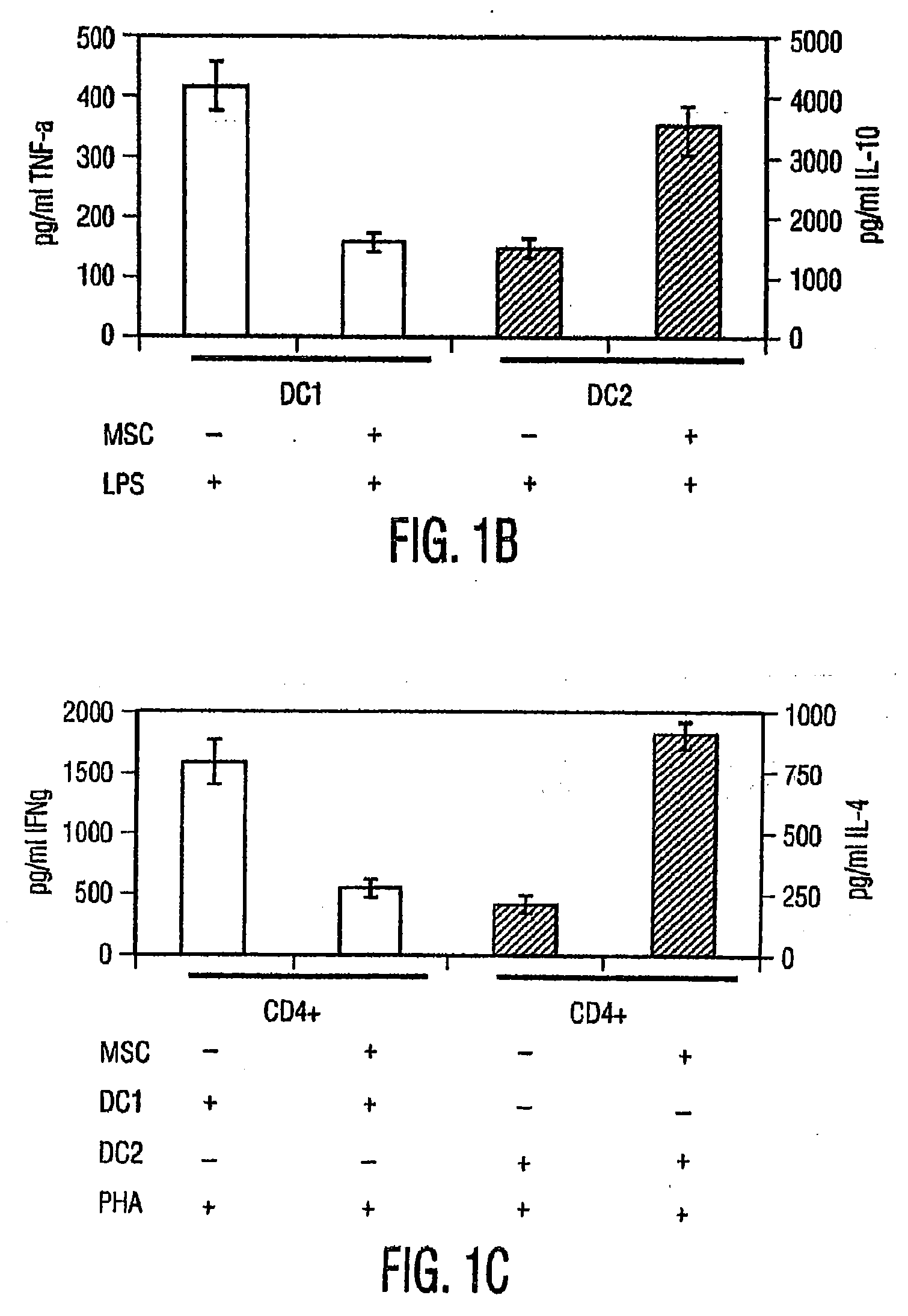Mesenchymal stem cells and uses therefor
a technology of stem cells and mesenchymal cells, applied in the field of mesenchymal stem cells, can solve the problems of limiting the ability of the recipient immune system to recognize and reject allogeneic cells
- Summary
- Abstract
- Description
- Claims
- Application Information
AI Technical Summary
Benefits of technology
Problems solved by technology
Method used
Image
Examples
example 1
Materials and Methods Culture of Human MSCs
[0114]Human MSCs were cultured as described by Pittenger et al., Science, vol. 284, pg. 143 (1999). Briefly, marrow samples were collected from the iliac crest of anonymous donors following informed consent by Poietics Technologies, Div of Cambrex Biosciences. MSCs were cultured in complete Dulbecco's Modified Eagle's Medium-Low Glucose (Life Technologies, Carlsbad, Calif.) containing 1% antibiotic-antimyotic solution (Invitrogen, Carlsbad, Calif.) and 10% fetal bovine serum (FBS, JRH BioSciences, Lenexa, Kans.). MSCs grew as an adherent monolayer and were detached with trypsin / EDTA (0.05% trypsin at 37° C. for 3 minutes). All MSCs used were previously characterized for multilineage potential and retained the capacity to differentiate into mesenchymal lineages (chondrocytic, adipogenic, and osteogenic) (Pittenger, et al., Science, vol. 284, pg. 143 (1999)).
Isolation of Dendritic Cells
[0115]Peripheral blood mononuclear cells (PBMCs) were obt...
example 2
[0132]Mesenchymal stem cells were given to a 33-year-old female patient suffering from severe Grade IV gastrointestinal graft-versus-host disease (GVHD). The patient was refractory to all other GVHD treatments. Endoscopic views of the patient's colon showed areas of ulceration and inflammation prior to treatment. Histology of the patient's colon showed that the graft-versus-host disease had destroyed the vast majority of the patient's intestinal crypts, prior to treatment.
[0133]The patient was given an intravenous infusion of allogeneic mesenchymal stem cells in 50 ml of Plasma Lyte A (Baxter) in an amount of 3×106 cells per kilogram of body weight.
[0134]The patient was evaluated at two weeks post-infusion. At two weeks post-infusion, an endoscopic view of the patient's colon showed that the areas of inflammation and ulceration visible prior to treatment were resolved. In addition, a biopsy of the patient's colon showed significant regeneration of intestinal crypts. Thus, the admini...
example 3
[0135]9 patients received 0.5×106 mesenchymal stem cells per kilogram of body weight, 10 patients received 1.6×106 mesenchymal stem cells per kilogram of body weight, and 15 patients received 5.0×106 mesenchymal stem cells per kilogram of body weight by intravenous infusion of a suspension of mesenchymal stem cells in Plasma Lyte A (Baxter) in which the mesenchymal stem cells were present in the suspension at a concentration of 2.5×106 cells / ml. The total volume of mesenchymal stem cell suspension given thus was dependent upon the dosage of cells and the weight of the patient.
[0136]19 patients received placebo doses of Plasma Lyte A. The placebo doses were in low, medium, and high doses in proportion to the volumes of the mesenchymal stem cell suspension given to the patients treated with the mesenchymal stem cells. Of the placebo patients, 5 patients were given a low dose of the suspension, 4 patients were given a medium dose of the suspension, and 10 patients were given a high dos...
PUM
| Property | Measurement | Unit |
|---|---|---|
| temperature | aaaaa | aaaaa |
| body weight | aaaaa | aaaaa |
| forced expiratory volume | aaaaa | aaaaa |
Abstract
Description
Claims
Application Information
 Login to View More
Login to View More - R&D
- Intellectual Property
- Life Sciences
- Materials
- Tech Scout
- Unparalleled Data Quality
- Higher Quality Content
- 60% Fewer Hallucinations
Browse by: Latest US Patents, China's latest patents, Technical Efficacy Thesaurus, Application Domain, Technology Topic, Popular Technical Reports.
© 2025 PatSnap. All rights reserved.Legal|Privacy policy|Modern Slavery Act Transparency Statement|Sitemap|About US| Contact US: help@patsnap.com



